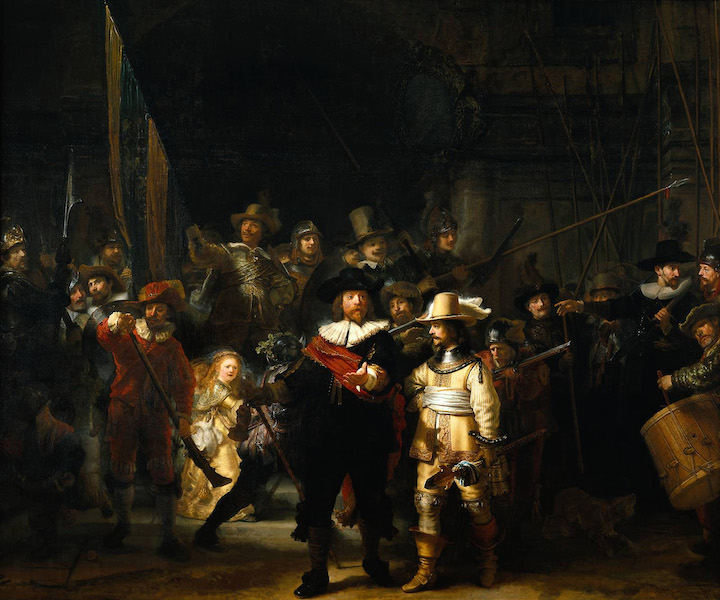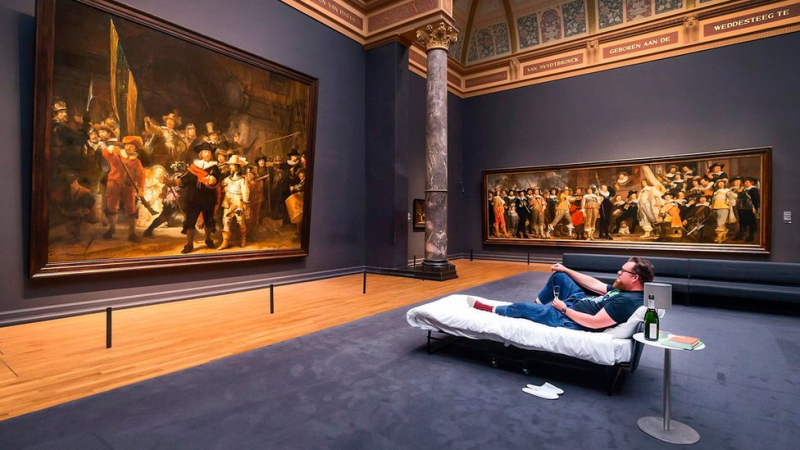The Night Watch is Rembrandt’s best-known work
Rembrandt van Rijn painted The Night Watch in 1642. It is in the Amsterdam Museum's collection, but it is prominently displayed in the Rijksmuseum as the most well-known painting in its collection. The Night Watch is a well-known Dutch Golden Age painting.
The painting is famous for three things: its enormous size (363 by 437 centimetres), the dramatic use of light and shadow (tenebrism), and the perception of motion in what would otherwise be a static military group portrait. The painting was finished in 1642, during the Dutch Golden Age. It depicts the departure of the eponymous company, led by Captain Frans Banning Cocq (in black with a red sash) and his lieutenant, Willem van Ruytenburch (dressed in yellow, with a white sash). Rembrandt draws the viewer's attention to three important characters among the crowd, using effective use of sunlight and shade: the two men in the center (from whom the painting gets its original title) and the woman in the center-left background carrying a chicken. The company's colors are carried behind them by the ensign, Jan Visscher Cornelissen. The figures are nearly life-sized.
Rembrandt naturally depicted the arquebusiers' traditional emblem, with the woman in the background carrying the main symbols. She is a mascot in her own right, with the claws of a dead chicken on her belt representing the clauweniers (arquebusiers), a pistol behind the chicken representing clover, and a goblet representing the militia. The man in front of her is wearing an arquebusier's helmet with an oak leaf motif. The dead chicken also represents a defeated opponent. The color yellow is frequently associated with triumph.










